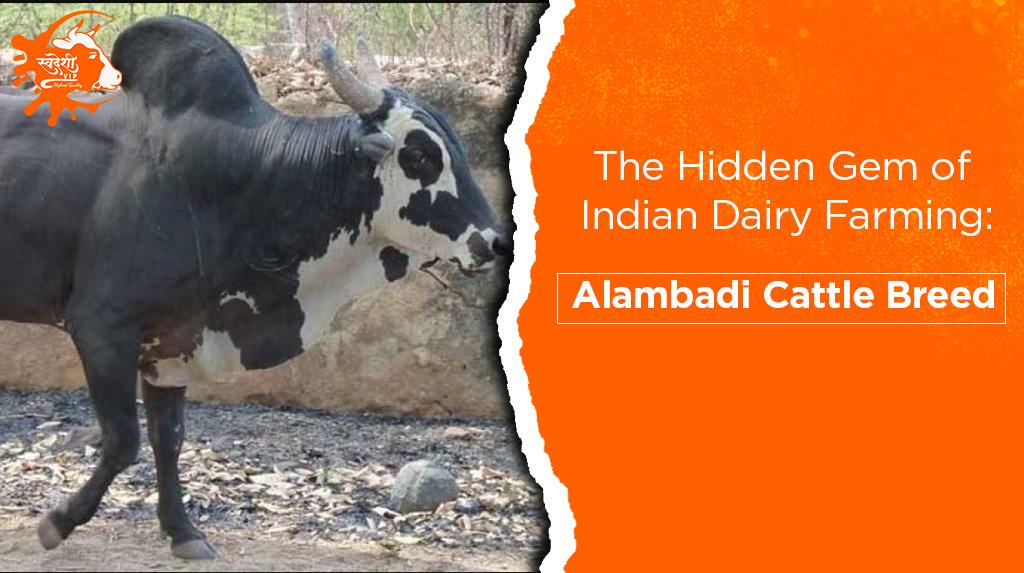
The domestication of animals was a significant event in Indian history, occurring 12,000 years ago. This led to the development of different cattle breeds in different places. One such breed in southern India is the Alambadi cattle breed, found in the Dharmapuri and Krishnagiri districts of Tamil Nadu and along the border of Karnataka state.
Over the years, the increasing utilisation of exotic breeds and the intensification of cattle farming have resulted in a massive downfall in the Alambadi cattle population. The importance of Alambadi cattle lies in their ability to work as draught animals, tolerate heat, resist diseases, adapt to harsh agricultural and climatic conditions, and survive with minimal feed and fodder.
The Alambadi Cattle breed comes from the Southern regions of India, particularly the Tamil Nadu area. They were initially employed as working animals to till fields and transport goods. This robust breed is medium in size, with greyish-white fur and reddish-brown heads and backs. Their ears are longer than those of other breeds, which provides heat-dissipating benefits.
An Alambadi bull typically weighs around 650 kg, while a heifer can weigh up to 500 kg. These cattle are known for their ability to survive in areas with minimal rainfall due to their mental hardiness and resilience against diseases without much intervention from humans.
It is considered one of the rarest breeds globally; the Alambadi can survive in scorching temperatures and has remarkable disease resistance. However, the breed is now nearly extinct. During harvest times, the cattle are brought back to villages to graze in the harvested fields, providing necessary manure for the soil.
This native breed is named after a village known as Alambadi, situated on the banks of the Kaveri River in the Dharmapuri district of Tamil Nadu. The region provides ample uncultivated forest lands, offering abundant pasture and open grazing areas for the cattle. Alambadi cattle breed can also be found in the Erode district of Tamil Nadu. Raised in the hilly regions of Tamil Nadu, these cattle survive by grazing in forested areas. It is said that Alambadi cattle breed in the North are descendants of the Hallikar breed from Mysore.
Alambadi cattle, originating in the southern state of Tamil Nadu, are highly valued as an Indian cattle breed and have traditionally been utilised as working animals. Its exceptional appearance and efficiency distinguish it from other cattle breeds, making it an attractive choice for any farming enterprise seeking success. Various initiatives have been undertaken to enhance and popularise Alambadi cattle breed, elevating its standing to a coveted asset for farmers and breeders.
The Alambadi Cattle has been a draught animal for centuries, aiding farmers in labour-intensive farm tasks. However, modern breeders are working to increase the population of Alambadi Cattle by expanding its usage beyond just being a draught animal. They envision this breed playing a more integral role in Indian farming, particularly as the country’s agricultural output and demand grow.
By recognising these animals’ hard work and unique capabilities, farmers can effectively integrate them into their farming operations, creating a sustainable system that enhances their crops and livelihoods.
The Alambadi cattle breed is a distinct Indian breed with a rich heritage that needs to be preserved by improving access to resources and supporting farmers in Tamil Nadu. This breed of cattle plays a vital role as draught animals in Tamil Nadu’s agricultural heritage. It is an asset for both animal farming and agriculture.
However, farmers need more access to resources and improved infrastructure to raise their Alambadi cattle successfully. Supporting Tamil Nadu farmers through government aid, grants, and investor funding will help ensure the success of Alambadi cattle breed. These efforts will ensure that these remarkable cows continue positively contributing to farming life in India well into the future.
It is an indigenous breed found in southern India, particularly in the Alambadi region in Tamil Nadu. It is recognized for its toughness, ability to adjust to local environments and satisfactory milk yield.
The milk acquired from the Alambadi cattle milk is rich in A2 beta-casein protein, which is considered easy to digest and beneficial for health compared to A1 protein found in some other breeds.
The Alambadi cattle typically live for 15 to 20 years, which is contingent upon the level of care and management they receive.
Alambadi cows are used for draught purposes, and each animal produces a maximum of 1-3 litres of milk per day.
The Alambadi cattle breed is moderately long and narrow with a prominent forehead. The Alambadi bull is iron grey with a typical horn.
Alambadi cattle contribute to sustainable agriculture by increasing local fodder. Their dung serves as a superb natural fertilizer that improves soil productivity.
All indigenous Indian breeds give more milk in India, home to the world’s highest-producing cows.
